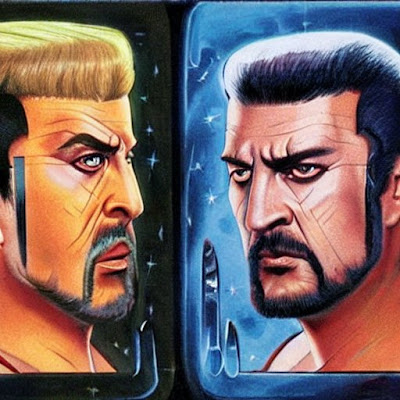In a mirror universe, the laws of physics, the course of history, and even the fundamental nature of individuals may diverge from what we experience in our own universe. These variations can range from minor differences to drastic divergences, creating an alternate version of reality.
As for the probability of the existence of mirror universes, it is purely speculative and remains a topic of debate among scientists and theorists. The concept of parallel universes is not currently supported by empirical evidence or confirmed through scientific observation. However, some theories in physics, such as string theory or the multiverse theory, suggest the possibility of multiple universes, each with its own set of physical laws and properties.
In popular culture, mirror universes or parallel realities have been explored in various forms of media, including literature, films, and television shows. One prominent example is the Star Trek franchise, which introduced the concept of a mirror universe in the original series episode "Mirror, Mirror." In this alternate reality, characters from the Starship Enterprise find themselves in a universe where their counterparts possess different personalities and moral alignments.
Another example is the DC Comics storyline "Crisis on Infinite Earths," where multiple parallel universes exist within the DC multiverse, each with its own versions of superheroes and villains. Marvel Comics has also explored the concept of mirror universes, such as the "Age of Apocalypse" storyline, where an alternate reality depicts a world where Professor X's X-Men failed to prevent the rise of Apocalypse.
In terms of real-world claims about mirror universes, it's important to distinguish between speculative ideas and scientific evidence. While some individuals may claim to have knowledge or experiences related to parallel universes, such claims are often anecdotal and lack empirical support.
Scientists and researchers, on the other hand, explore the concept of parallel universes through theoretical frameworks like string theory, quantum mechanics, and the multiverse hypothesis. These theories propose the existence of multiple universes or dimensions, each with its own set of physical laws and characteristics. However, it's important to note that these theories are still being developed and are not yet confirmed by experimental data.
Mirror universes primarily exist as a concept within the realm of fiction and theoretical physics. While they have captured the imagination of many people, scientific evidence for their existence is currently lacking, and claims of personal experiences in mirror universes should be approached with skepticism.
While intriguing to contemplate, the scientific community has not yet reached a consensus on the existence or likelihood of such parallel realities.
Source: Some or all of the content was generated using an AI language model


No comments:
Post a Comment